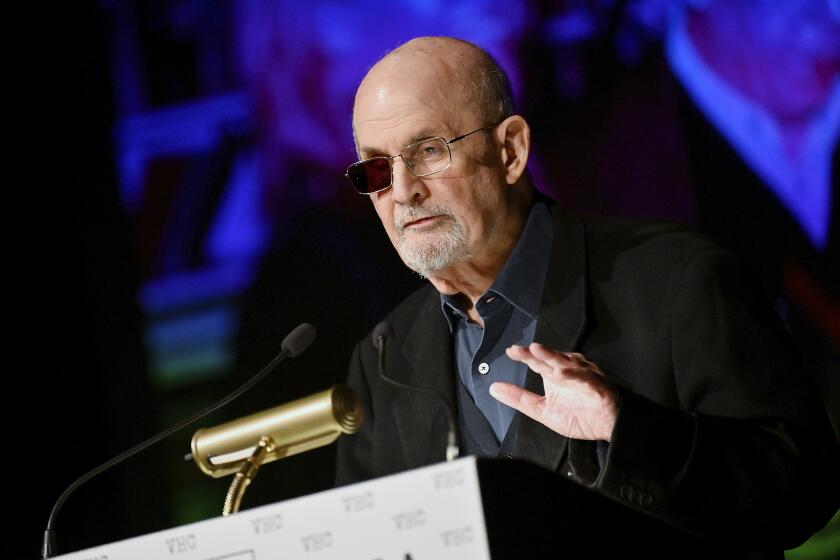Identity crisis
I FEEL for Randall Kenan. He, like me, is a black American who came of age in the strange interregnum between the civil rights movement of the 1960s and the post-pro-integration era that set in during the 1980s, just as we hit college with the sincere idea that everything had changed.
Kenan and I belong to what I call the 1.5 generation -- shaped by the great, final iteration of black freedom dreams but now wondering, as we face serious middle age, what the hell it all meant. Those of us with a social conscience are nagged by questions that have hardened into riddles: Are we all that the movement meant us to be? Did we largely fulfill the dream or betray it? How much of the past do we carry into the future? What is our future? What does “our” even mean anymore?
The goal for Kenan is not to bridge the gap between then and now as much as to study its contours up close, its cracks and negatives spaces. Such a process is not new; these questions, which Kenan posed in his well-received 2003 book, “Walking on Water,” are familiar for blacks, who are used to taking stock of progress every 20 years or so. Still, as we sink ever deeper into the muck of paradox -- there is as much black individual success as there is collective failure; imprisonment rates are at an all-time high, but willingness to put the problem in a racial context is at an all-time low -- the stock-taking feels more urgent than ever. Where are we, indeed?
Kenan goes gamely at the question -- that is, the paradox -- with “The Fire This Time,” a series of essays and reflections meant to echo in form, content and length James Baldwin’s masterful “The Fire Next Time,” which was published in 1963 (the year Kenan was born). Yet while I admire Kenan’s aspirations, this latest work frankly has more smoke than fire. Not because Kenan is not Baldwin -- who among us is? -- but because it is apparent from the outset that he lacks the clear-eyed passion and purpose that animated so much of Baldwin’s book.
Kenan may be a good chronicler and debater, but he lacks the instincts of an essayist. He mounts arguments and then forgets about them or lets them teeter; he mistakes detail for substance, piling on scenes from his boyhood in rural North Carolina that are interesting but often not germane to anything. His narrative voice is inconsistent: He talks to himself here, lectures the reader there. His discussion of certain common-knowledge topics can be downright patronizing -- for instance, he speaks of the American tendency toward anti-intellectualism as if we’ve never heard of it before.
Another problem with “The Fire This Time” is its attempt to be both long-view and current: Kenan wants to assess simultaneously his own life and the larger meaning of Barack Obama’s presidential run. He also wants to round up all other relevant black issues of the last 20 years, Hurricane Katrina and O.J. Simpson included, and make some grand statement about them all. This approach is predictably piecemeal, with the sentiments either incomplete (the Obama story is hardly over) or spread too thin.
Of course, this is not 1963, and there is no clear or monolithic black cause like civil rights anymore. Kenan in some ways captures the fragmentation of the present moment, but he doesn’t always seem to know it; you get the sense that he’s throwing a lot of paint on the wall and hoping some of it sticks. A five-page discussion of black heavyweight boxers from Jack Johnson to Lennox Lewis -- admittedly a big subject -- feels more like an aside, and segues too suddenly into a personal reminiscence about 1970s movies and pimp culture.
It doesn’t help that Kenan’s writing style is self-consciously baroque, full of the long sentences, tangents and oblique big words favored by the 19th century novelists he (as did Baldwin) so admires. There is nothing inherently wrong with such a style -- I love Dickens as much as Kenan does -- but it had better hit its mark or risk sounding self-indulgent.
And yet, as much as self-indulgence is Kenan’s undoing, it is also the basis of his appeal. Like a patient on a shrink’s couch, he is willing to talk -- a lot -- about racial matters and come up uncertain or even empty. This goes against most modern “race” writing, which generally starts out with an answer or hypothesis and uses a book to advance it. Kenan gets points for seeking to put the complex black condition in the most human terms possible, to see race not as an academic or statistical argument but as the plot of an independent movie in which people win, love, lose or can’t find their way.
Still, the story-boarding can be a cop-out; musing on the phenomenon of high-ranking black conservatives like Condoleezza Rice, Kenan naively avoids political conclusions, wondering instead: “Who knows where the current secretary of state’s -- the former national security advisor’s -- allegiances lie, when she fails to speak on issues affecting most Black Americans domestically? ... Who knows what Armstrong Williams, a radio talk-show host, television talking head, and newspaper columnist, was thinking when he accepted hundreds of thousands of dollars from the Bush administration to flack their positions while not sharing the truth of this employment with his thousands of listeners?”
Kenan is most compelling when he drops the big statements and gets small. A story about how his family elders chastised him for writing insufferably purple prose on a junior high school paper (“Who do you think you are?” one aunt intoned) is very funny and offers more insights about the glories and pitfalls of black progress than a dozen musings about Obama and the rest. He can also get off a good metaphor, as in a chapter that reimagines modern black people of all stations surviving in and even outwitting a hostile world as the folk archetypes Br’er Fox and Br’er Rabbit once did.
To his credit, Kenan looks for through-lines and historical patterns, and like the scholar and blues enthusiast Albert Murray, he believes that black people have largely reinvented their own existence in every generation -- making the most of circumstances in a way that Murray would describe as “vamping ‘til ready.” It is that vamping, that eternal and necessary improvisation, that is both a source of power and a source of unease in black history. It defies categorization and politicization, which is what Kenan intuits and wants us to see.
In the end, though -- indeed, throughout the book -- he betrays the complexity of this vision. And he can’t resist a black, quasi-religious impulse to put a good face on things.
In the book’s final pages, Kenan ignores all the questions he has posed and waxes optimistic, assuring Baldwin that the potential for greatness is here and that a change is surely gonna come. It’s hard to imagine that Baldwin, for all his own faith in redemption, would take a look at the landscape in 2007 and agree.
More to Read
Sign up for our Book Club newsletter
Get the latest news, events and more from the Los Angeles Times Book Club, and help us get L.A. reading and talking.
You may occasionally receive promotional content from the Los Angeles Times.






